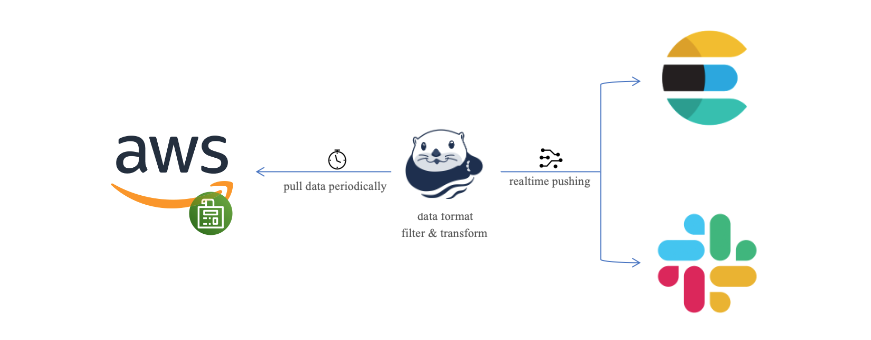Overview
Billings from cloud vendors allow users to observe the cost of resource.
Vanus obtains bills by using api from various cloud vendors. It uses Elasticsearch for data storage to achieve unified management of bills. It also notifies the team of abnormal expenses via like Slack Channel.
 In this tutorial, you will learn how to use Cloud Billing Source of Vanus to aquire the billing from Cloud Service providers like AWS, and store the data in Elasticsearch.
In this tutorial, you will learn how to use Cloud Billing Source of Vanus to aquire the billing from Cloud Service providers like AWS, and store the data in Elasticsearch.
AWS Billing to Elasticsearch integration
Prerequisites
AWS IAM Access Key.
AWS permissions
ce:GetCostAndUsagefor the IAM user.Elasticsearch and Kibana are up and running
Go to Vanus Playground :an online K8s environment where Vanus can be deployed.
Step 1: Deploying Vanus
Login Vanus Playground.
Refer to the
Quick Startdocument to complete theInstall Vanus&Install vsctl.Create an eventbus
~ # vsctl eventbus create --name aws-billing
+----------------+-------------+
| RESULT | EVENTBUS |
+----------------+-------------+
| Create Success | aws-billing |
+----------------+-------------+
Step 2: Deploy the AWS Billing Source
Use command line create AWS Billing Source
Create the config file
cat << EOF > config.yml
target: http://192.168.49.2:30002/gateway/aws-billing
secret:
access_key_id: AKIAIOSFODNN7***MPLE
secret_access_key: wJalrXUtnFEMI/K7MDENG/bP**iCYEXAMPLEKEY
EOFStart with Docker
docker run -it --rm --network=host \
-v ${PWD}:/vanus-connect/config \
--name source-aws-billing public.ecr.aws/vanus/connector/source-aws-billing
Step 3: Deploy the Elasticsearch Sink
Use the command line of Vanus create the event target: Elasticsearch Sink
Create a yml file named sink-es.yml in the playground with the following command:
cat << EOF > sink-es.yml
apiVersion: v1
kind: Service
metadata:
name: sink-es
namespace: vanus
spec:
selector:
app: sink-es
type: ClusterIP
ports:
- port: 8080
name: sink-es
---
apiVersion: v1
kind: ConfigMap
metadata:
name: sink-es
namespace: vanus
data:
config.yml: |-
port: 8080
es:
address: "http://localhost:9200"
index_name: "vanus_test"
username: "elastic"
password: "elastic"
---
apiVersion: apps/v1
kind: Deployment
metadata:
name: sink-es
namespace: vanus
labels:
app: sink-es
spec:
selector:
matchLabels:
app: sink-es
replicas: 1
template:
metadata:
labels:
app: sink-es
spec:
containers:
- name: sink-es
image: public.ecr.aws/vanus/connector/sink-elasticsearch
imagePullPolicy: Always
ports:
- name: http
containerPort: 8080
volumeMounts:
- name: config
mountPath: /vanus-connect/config
volumes:
- name: config
configMap:
name: sink-es
EOFReplace the config value with yours.
es:
address: "http://localhost:9200"
index_name: "vanus_test"
username: "elastic"
password: "elastic"Run es sink in kubernetes.
kubectl apply -f sink-es.yaml
Step 4: Create Subscription
Create Subscription Event, here can do filter before deliver event to sink end, execute the following command:
vsctl subscription create \
--eventbus aws-billing \
--sink 'http://sink-es:8080' \
--filters '[
{
"suffix": {
"source":".billing"
}
}
]'
sinkPoints to the target end of the event delivery.filtersThe method of filter the events.- use keyword
suffixto do the postfix match for attribute source
- use keyword
Step 5: Result Checking
Check the Billing Data. Now let's connect to kibana so that we can manage data and perform data analysis.

Summary
In this tutorial, we learned how to integrate AWS Billing Source and Elasticsearch Sink. Of course, Vanus also have connectors for bills of other cloud services , learn more about Vanus Connect.